Browse using the new Vinous website now. Launch →
Printed by, and for the sole use of . All rights reserved © 2015 Vinous Media
Napa Valley Soars: The 2023 & 2024 Cabernet Sauvignons
BY ANTONIO GALLONI | NOVEMBER 12, 2025
After three very challenging years, Napa Valley soars with the 2023 and 2024 Cabernet Sauvignons. The two vintages are quite different in style, and yet quality is very high in both years. In 2023, a long, cool growing season yielded young wines of exceptional finesse. Not to be outdone, the warmer 2024 vintage has a lot to offer as well. At some properties, the 2024s will challenge or surpass the 2023s.
2023: The Vintage of the Century?
The public relations barrage started at some point during the summer, with a series of emails quoting winemakers describing 2023 as some version of “the vintage of a lifetime,” “the best vintage of my career” and so forth. After a series of brutally challenging years, some of that enthusiasm was certainly understandable.
The year was marked by unusually cold and rainy weather. Vines parched by intense heat in 2022 needed water. They got plenty between December 2022 and March 2023. I have vivid memories of a very wet January that year. Winemakers breathed an air of calm and serenity for the first time in recent memory. Cool conditions persisted throughout the summer, leading to veraison that occurred a month later than normal. Winemakers started to become concerned because there is a point in the fall where the window to harvest eventually closes. This is especially true for later sites and for larger wineries that are obligated to start picking at some point. Virused vines that struggle to accumulate sugar even in warm years struggled. Bursts of heat in July, August and early October proved to be well timed and pushed fruit to full ripeness.
Harvest was exceptionally late, sometimes by as much as three to four weeks, compared to recent historical norms. “We had to be really patient with late sites,” Winemaker Ryan Knoth explained as he discussed his first vintage in charge at Joseph Phelps. “We pushed it to late October and early November in our coolest vineyards.” Producers had wide picking windows and were able to make very specific choices. That’s a contrast to 2024, for example, where intense heat at the end compressed the final phase of harvest. Most producers reported generous yields. The wines seem to have extracted easily.
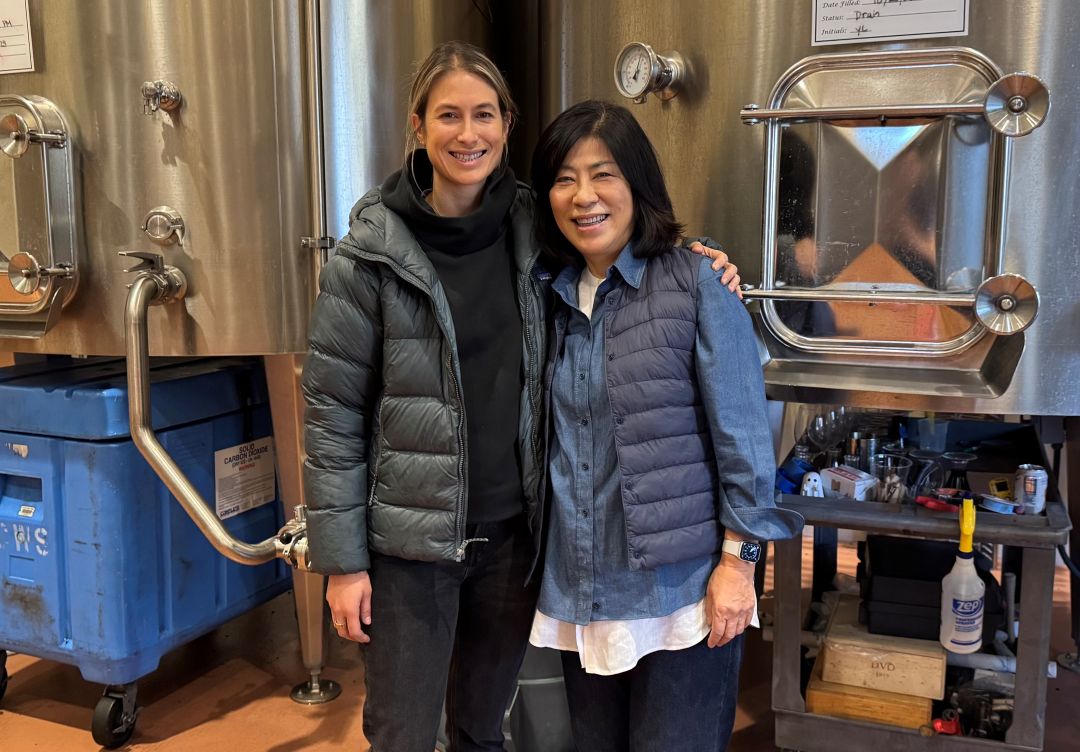
Maya and Naoko Dalle Valle presented an exceptional set of 2023 Cabernet Sauvignons.
Tasting the 2023 Napa Valley Cabernets
In tasting, the 2023s are defined by explosive aromatics and fully ripe, finessed tannins that feel like silk on the palate. Many wines are absolutely delicious, even young. Quality is exceptionally high across the board. The wines are generally medium in body, with lower sugars than the norm for Napa Valley today. In some cooler spots, the wines can feel a bit light. The finest 2023s display exceptional finesse and harmony. Stylistically, 2023 recalls vintages like 2012 and 2018 that were also defined by long growing seasons. I give the edge to 2023, as the wines are more polished and nuanced, partly because of shifting ideas on farming and winemaking that I describe in more detail below. By any measure, 2023 is a magnificent vintage. Maybe not the vintage of a lifetime, as I certainly hope to see many more years of this caliber in the future.

The Colgin 2023 are among the very best wines of the year. From left to right: Founder and Chairwoman Ann Colgin, CEO Joe Wender, Director of Winemaking Allison Tauziet and COO Neil Bernardi MW.
The Napa Valley Paradox
It is no secret that the wine market is going through a period of correction. These events are unfolding at a time when Napa Valley wines have never been better. “There’s more freedom to explore the earlier end of ripeness in this decade than there was in the past,” Colgin’s longtime Director of Winemaking Allison Tauziet explained succinctly during my visit. That has been evident for quite a few years now.
The role of consultants has also evolved in a positive direction. In my opinion, a consultant should be just that—someone who provides advice. But at many estates, consultants became de facto winemakers, leading to a certain standardization of wines. To be clear, I don’t blame consultants for that. They are professionals, hired to do a job, just like, say, an architect who is hired to design a building in their style. That is what they are paid to do. The responsibility for the standardization of wines lies solely with those owners who sought to copy the commercial success of certain famous wines. The COVID-19 pandemic was a turning point. With some consultants not able to move around as freely, wineries were forced to become more self-sufficient. And they have. The results are evident in wines that are increasingly diverse and, at the top, of exceptionally high quality.
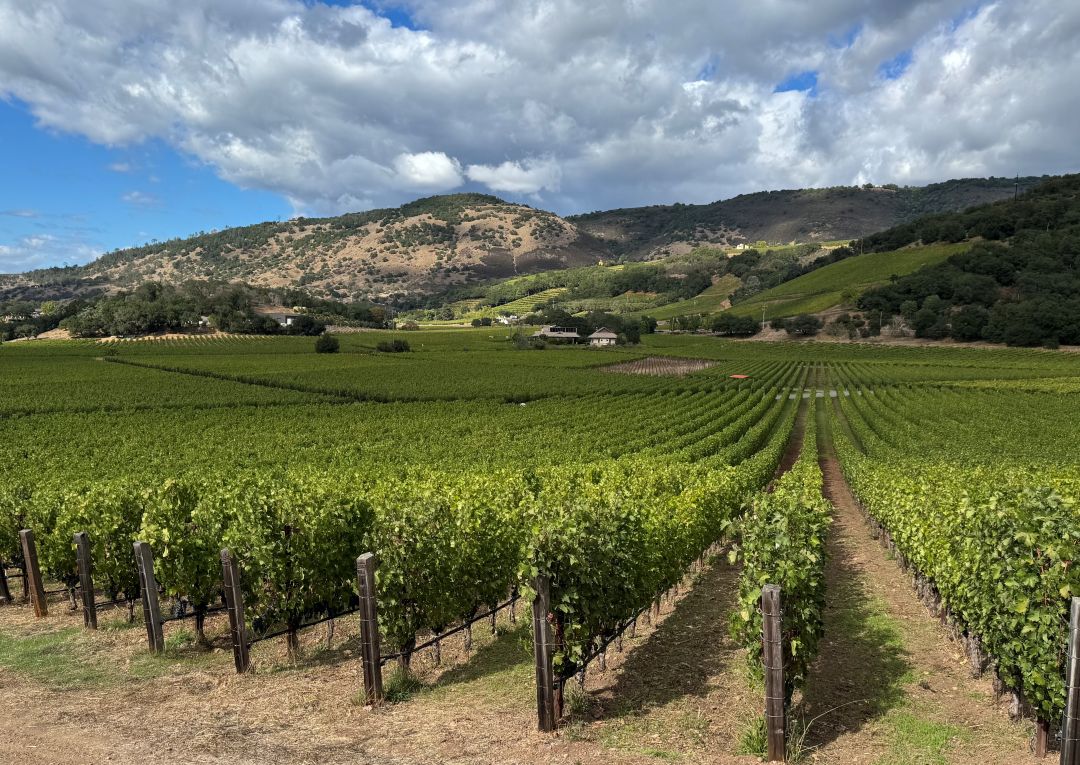
Checking out vineyards at Screaming Eagle in the middle of the 2025 harvest.
A Consumer’s Guide to the 2023s
For those who want to drink the best of the best, the options in 2023 are many. There is no question that it is a fabulous vintage. But if I were a younger consumer, just getting into wine or on a tight budget, I would be looking elsewhere. Specifically, I would be focusing on Napa Valley’s entry-level and mid-tier wines.
Part of the strength of 2023 is that wines are very strong from top to bottom. This is one of the key aspects that defines the very best vintages. But 2023 has something more to offer. As a function of the tough economic environment, many entry-level 2023s are especially strong because they include lots that would have been used for higher-end bottlings in better times. There’s so much to love about 2023 Napa Valley Cabernets in the under-$75 and under-$150 price ranges. Admittedly, that is still a lot of money for many consumers, but Napa Valley is a high-rent district, and that sort of pricing is not entirely out of line compared to prices in other prestigious wine-producing regions throughout the world. I will address pricing more fully a little later in this report.
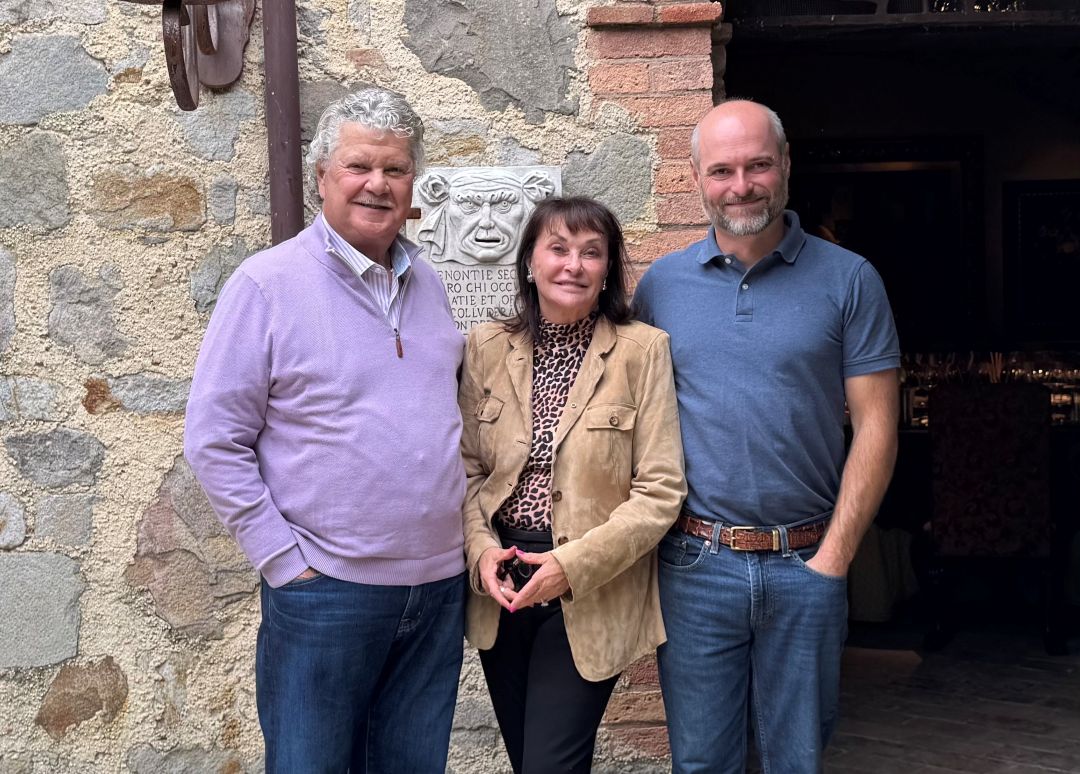
Proprietors Claude and Katherine Blankiet, along with Winemaker Graeme MacDonald, excelled in 2023 with brilliant wines.
Top Values in 2023 Napa Valley Cabernet Sauvignon — $75 and Under
- 2023 Amici Cabernet Sauvignon (Napa County)
- 2023 Clos du Val Cabernet Sauvignon (Stags Leap District)
- 2023 Dominus Othello
- 2023 Frog’s Leap Cabernet Sauvignon Estate
- 2023 Rossi Wallace Cabernet Sauvignon La Grande Roche
- 2023 Turnbull Cabernet Sauvignon (Napa Valley)
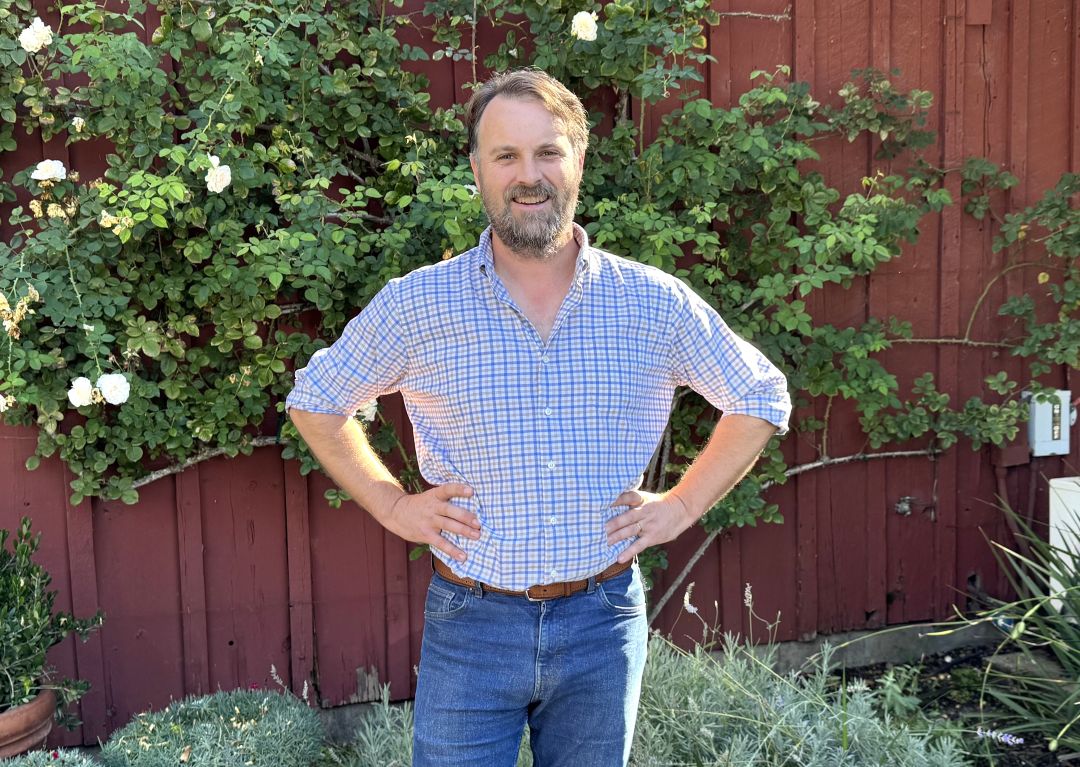
Rory Williams is building on the rich legacy established by his father, John, at Frog’s Leap. The 2023s are superb across the board.
Top Values in 2023 Napa Valley Cabernet Sauvignon – $150 and Under
Many of these are Super Seconds, the second wines of top estates.
- 2023 Accendo Cellars Cabernet Sauvignon Laurea
- 2023 Baker & Hamilton Cabernet Sauvignon
- 2023 Blankiet Estate Prince of Hearts
- 2023 Dalla Valle Collina Dalla Valle
- 2023 Keenan Cabernet Sauvignon Spring Mountain District
- 2023 Lail Cabernet Sauvignon Blueprint
- 2023 Mt. Brave Cabernet Sauvignon
- 2023 Peter Franus Cabernet Sauvignon Brandlin Vineyard
- 2023 Snowden Cabernet Sauvignon Brothers Vineyard

Tasting the 2024 Cabernet Sauvignon at Spottswoode.
Looking Ahead to 2024: Back-to-Back Greatness?
As exciting as the 2023s are, I have no doubt that 2024 will be better for some, perhaps many estates. We will see. Two thousand twenty-four was marked by consistently warm weather throughout the season. That’s not as problematic as it sounds. Vines don’t respond well to sudden changes in conditions, for example, the searing and prolonged heat that followed a generally cool summer in 2022. Those scenarios are hard for vineyard managers and winemakers, too. The 2024 season was generally quite even, but there were three heat episodes. The first was around the July 4 holiday weekend. High temperatures returned in late July and early August, around veraison for many properties. A third heat event occurred in early October. These spikes accelerated harvest but do not appear to have caused any real problems.
Yields are generally lower in 2024 than they were in 2023. That’s a positive. The wines are richer, a bit riper than the 2023s, and yet they have a real sense of balancing energy. Today, 2024 reminds me of 2014 in its vibrancy, brightness and the general shape of its chocolatey tannins, except that the 2024s have more mid-palate intensity and overall fruit than the 2014s did in their youth. Many 2024s showed exceptionally well. This will be a fascinating vintage to follow.

Massimo and Erin Di Costanzo excelled with their Cabernet Sauvignons in 2023 and 2024.
First Thoughts on 2025
Spirits were high during the more than three weeks I spent in Napa Valley around harvest this year. A long, cool growing season set up a vintage with relatively low Brix levels in the field. There were some small rain events around harvest and then one larger rain in October, but nothing that appears to have been especially problematic. Harvest decisions were quite different from estate to estate. Howell Mountain and some parts of Calistoga will be wild cards. The Pickett Fire, which started on August 21, blew smoke into several neighboring regions, most notably Howell Mountain. Dunn did not pick a single grape of estate fruit, while O’Shaughnessy brought it all in. Of course, decisions like these don’t always come down to a single factor. There may be other reasons some estates chose to harvest or not. Ultimately, it’s what is in the glass that will tell the story of the new vintage.
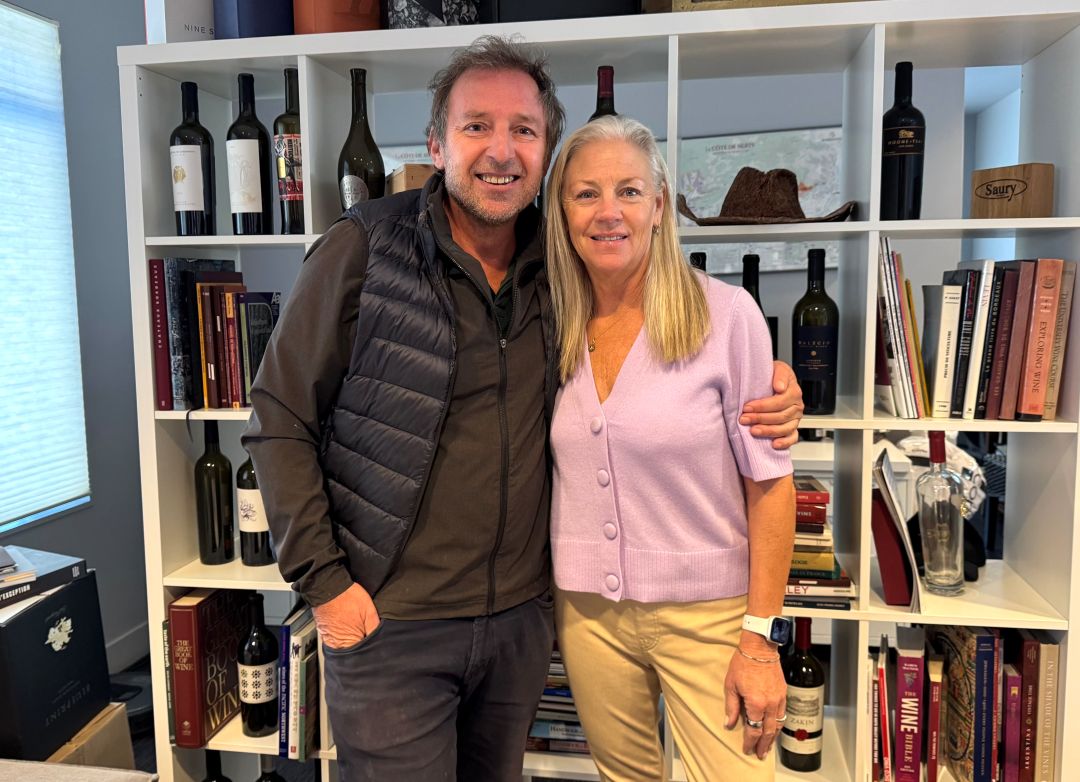
Philippe and Cherie Melka’s 2023s are superb.
The Final Verdict on 2022
I also tasted many 2022s for this report, specifically wines that have later release schedules.
The 2022 vintage is one of the most complicated in recent memory. Some vintages are marked by one or two key events that pretty much apply to all the wines. For example, in 2021, the defining characteristic was drought and ensuing low yields. In 2012, a long, cool growing season with drought and relatively high yields resulted in graceful, aromatic, mid-weight wines. The 2010 growing season was punctuated by unexpected late-season heat after a long, cold growing season.
But 2022 is far more complex than that because of searing Labor Day heat that was much more severe and prolonged than expected. It is a vintage that developed along several different dimensions. The first is time. There were at least three different harvest periods in 2022: 1) before or just as the heat arrived, 2) during the peak of the heat and 3) after the heat subsided, when rain and cold temperatures allowed vineyards that had made it through the spikes to recover.
Then, there is the dimension of location, which is somewhat related to time, but not entirely. Napa Valley is a vast appellation. It is defined by two mountain ranges, the Mayacamas Mountains to the west and the Vaca Mountains to the east, and then the benchlands of each of those ranges, which are more gradually downward-sloping to the west and steeper to the east. Finally, there is the true valley floor. Elevation can be a help in warmer years, but at certain levels it becomes a negative. This is especially true in some mountain sites where the narrower diurnal shift compared to the valley floor results in vines that often wake up late, then ripen quickly to catch up. In a cool year, as 2022 was shaping up to be, the sudden change in temperatures and acceleration of ripening can happen too quickly such that grapes don't ripen fully.
Vineyard exposure is another dimension, and not the easiest to observe. Take Pride, for example. It sits at elevation on the Napa/Sonoma border, on Spring Mountain, which is one of the rainier appellations in Napa Valley. But most of the blocks on the estate are south-facing, in other words, in the warmest exposures.
The last dimension is winemaking style, specifically the kind of wine each producer and estate strives to make. Here, the variations are nearly infinite.
It is impossible to define 2022 with a single phrase or sentence, except to say that it is a vintage to approach on an estate-by-estate, wine-by-wine basis. Although I can’t think of any 2022s that rival the wines of the best years, many 2022s are superb and deserve to be appreciated for what they are.

The Diamond Creek 2022 Cabernet Sauvignons are among the most successful wines of this challenging vintage.
Top 2022 Napa Valley Cabernet Sauvignons in This Report
- 2022 Burgess Cabernet Sauvignon Quartz Creek
- 2022 Diamond Creek Cabernet Sauvignon Red Rock Terrance
- 2022 Harlan Estate
- 2022 Pride Mountain Vineyards Claret Reserve
- 2022 Shafer Cabernet Sauvignon Hillside Select
- 2022 Vineyard 7 & 8 Cabernet Sauvignon Estate
In Praise of Sauvignon Blanc
The 2023 vintage is also very strong for white wines. Readers will find many superb Sauvignon Blancs in this article, led by Robin Lail’s stunning 2023 Georgia. Sauvignon Blanc has been on the rise in recent years, led by a shift in consumer preferences towards white wine in general and a desire by producers to have some variety within their ranges. Many producers have upped their game. These include Futo, Impensata and Spottswoode, all of whom are making important, pedigreed Sauvignon Blancs.
Sauvignon Blanc has a long history in the Napa Valley. Originally from the Loire Valley, Sauvignon Blanc was first planted in the Napa Valley in the late 1800s. Robert Mondavi christened his oak-aged version Fumé Blanc in 1968 and enjoyed huge commercial success. Robert Mondavi Winery continues to bottle a small amount of Sauvignon Blanc from their I-Block, which was planted in 1945 on head-trained vines and is believed to be the oldest Sauvignon Blanc in the United States. Other notable examples over the years include the Sauvignon Blancs made at Liparita, Araujo Estate and Frog’s Leap. Sauvignon Musqué is often used in blends for its characteristic white flower and tropical inflections. The best Napa Valley Sauvignon Blancs don’t just offer an alternative to bold red wines; they are structured, serious wines that age beautifully.
Not to be outdone, Chardonnay also performed exceptionally well in 2023.
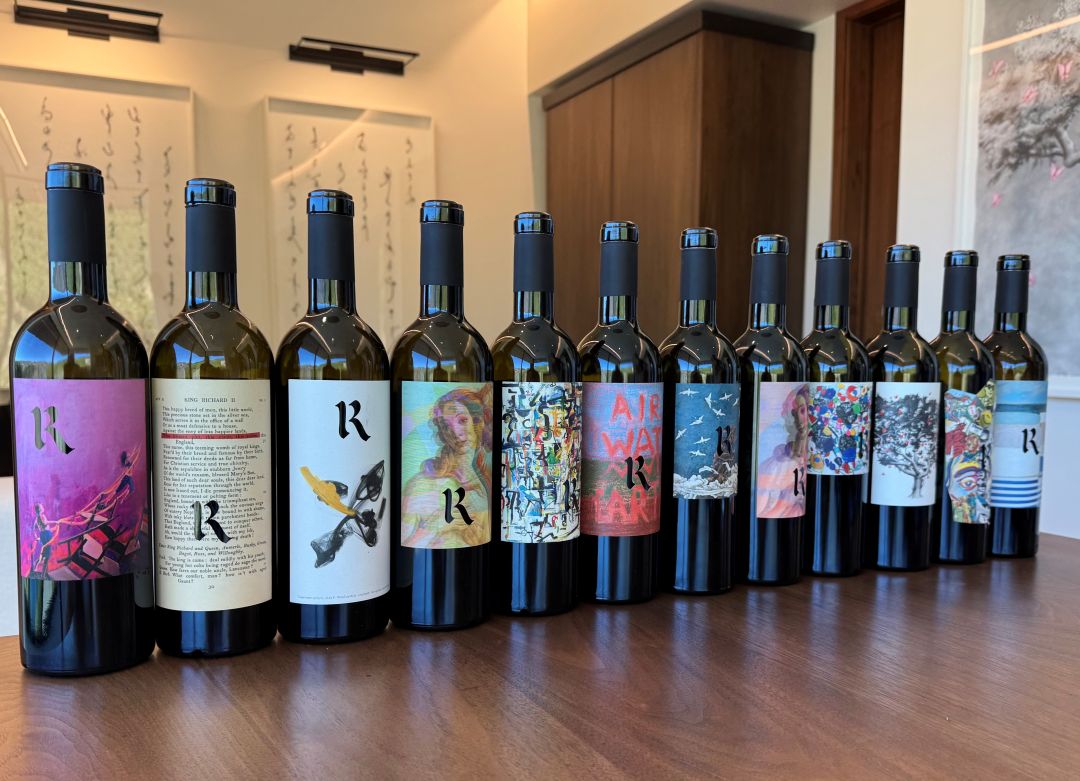
The full collection of Realm 2023s signals a new focus on vibrancy and energy in wines. The Cabernet Franc Houyi Vineyard is the finest wine I have ever tasted from Realm.
Cabernet Franc Takes Center Stage
Cabernet Franc is another variety on the rise in Napa Valley. Recent years have seen a boom in new bottlings of pure Cabernet Franc and Cabernet Franc-driven blends modeled after early examples like Dalla Valle’s Maya. Cabernet Franc is known for its explosive aromatics, vibrant red-toned fruit and slightly lighter body vis-à-vis Cabernet Sauvignon, all qualities that align with contemporary tastes. The finest of this newer generation of wines are truly spectacular. As much as I like Cabernet Franc and Cabernet Franc-based wines—which is a lot—producers must be careful to avoid overplanting, especially in sites that are not inherently well suited to Franc.
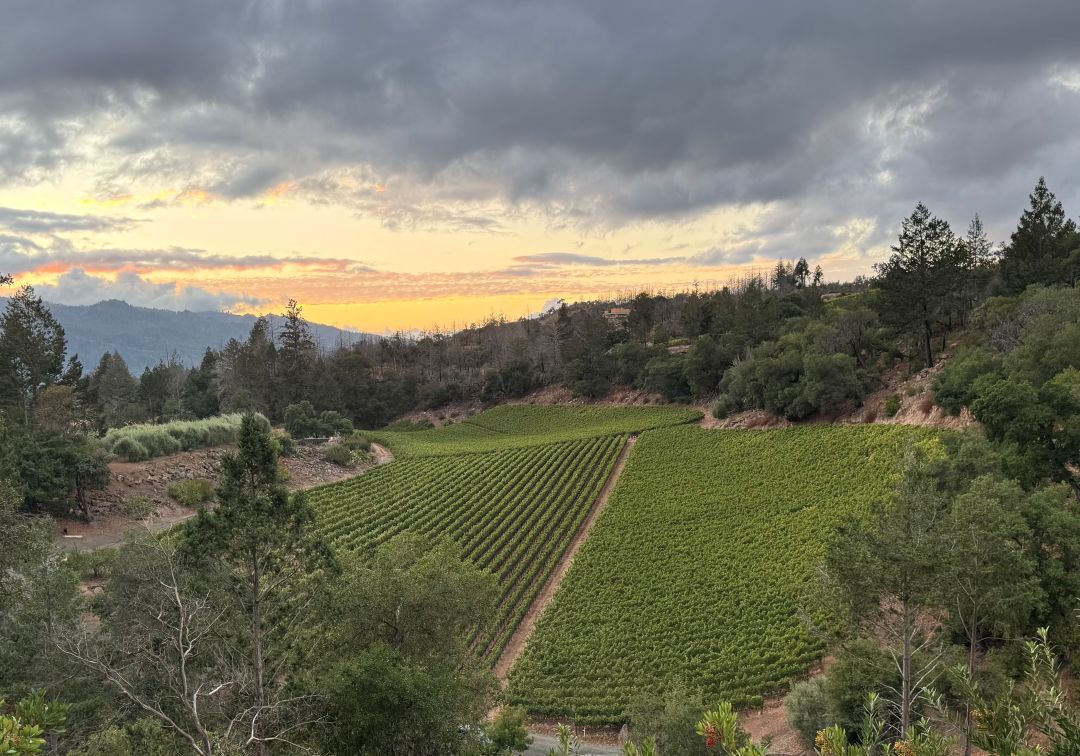
Sunset over the Forman estate vineyard in St. Helena.
The State of the Market
It is clear that the wine world is adjusting to oversupply and slackening demand. The casual visitor to Napa Valley will notice huge swaths of vineyards that have recently been ripped out. The visual impact is shocking. This year, as last, a significant amount of Napa Valley Cabernet was left on the vine, without a home, unpicked. Many producers are quietly scaling down production and/or eliminating some of their less popular wines. Understanding consumer preferences and whether today’s buying patterns are temporary or longer-term is a major topic of discussion. I don’t believe these macro trends are different in Napa Valley than they are in other regions throughout the world.
Still, it’s not doom and gloom everywhere. Christian Moueix recently purchased an 86-acre ranch from Markham. Earlier this year, Antinori acquired the late Warren Winiarski's Arcadia Vineyard in Coombsville for Stag's Leap Wine Cellars. Brion Wise continues to snap up prime Napa Valley vineyard land and wine brands, including Mark Herold Wines, which now has a new tasting room on Highway 29. Suzanne Deal Booth recently purchased Wheeler Farms, one of the most elite custom crush facilities in Napa Valley. Opus One recently acquired a property on Atlas Peak. That is significant for several reasons. It is Opus One’s first holding away from their home base in the center of Oakville, and a very targeted move towards a location with forests and a more active ecosystem that is consistent with a newfound focus on sustainable viticulture. Opus One joins Shafer as new owners in this remote appellation. These proprietors and wineries, all of them quite successful and experienced, clearly see an opportunity to build foundations for the future. Current market conditions are likely to result in a shakeout in which some wineries suffer while others prosper.

My tasting at Abreu with winemaker Brad Grimes encompassed all the wines from 2024, 2023, 2022 and 2015.
Thoughts on Pricing
It is common to hear the complaint that Napa Valley wines are too expensive. To be sure, some producers have been too ambitious with pricing and are now facing resistance. It’s a complex problem, but I think the bigger issue is at the lower end of the pricing spectrum. Higher-end wines will find an audience, but that takes more marketing and work today than ever.
The average price for Napa Valley Cabernet Sauvignon is about $8,500 per ton. Using current formulas, that sets the price for a bottle at around $85. Producers who work with estate fruit can come in lower than that, in some cases quite a bit lower. The real problem happens when those wines enter the market. Restaurant markups used to be 2.5x to 3x, but now they are often pushing 4x. That $85 bottle is now $340 on a wine list. That is a lot of money. By-the-glass pricing is such that the price to the consumer for a glass equals the bottle price. That means a glass of entry-level Napa Valley Cabernet Sauvignon is $50-70. Why would a consumer, especially a young consumer, choose that over a cocktail? They might, if they thought they were getting something special.
Napa Valley is an odd place to visit. Curious oenophiles who travel to regions like Bordeaux, Burgundy and Piedmont will find a treasure trove of places to explore, starting with restaurants at all levels, from simple wine bars to starred establishments. All these regions have favorite haunts, often informal places where locals and visitors alike go to spend time, places where average consumers can rub elbows with famous winemakers and come home with great stories to share. Curiously, Napa Valley wine country has only a few quality wine bars or carefully curated high-end retail shops.
To be fair, many Napa Valley wineries offer exceptional tasting experiences, but that is not the same as the feeling a wine lover gets walking around Chablis, Beaune, St.-Émilion or Alba and its surrounding towns, that feeling of being surrounded by great wine, the wines one has read about for years, the wines the average consumer aspires to try once in their life. Napa Valley doesn’t quite connect with the consumer in the same way. All these regions have restaurants where wine is priced fairly. Prices for Napa Valley wines in the heart of Napa Valley restaurants are often exorbitant. What part of that is in any way appealing? Do I really want to spend $1000 for a bottle of wine in a restaurant that was produced a mile away and is marked up four times? No, I do not. Some of the problem lies in excessive regulation. Local elected officials must understand that while Napa Valley enjoys a very strong brand value, it increasingly competes with global peers for consumer dollars, and it is losing that battle. There’s a real opportunity for enterprising individuals to build what Napa Valley truly needs: curated shops and wine-themed restaurants that anchor wine to everyday life, that weave wine into the local fabric in the way European regions do so naturally. I would love to see a world in which wine was more accessible, not only in terms of pricing, but just generally available. Consumers never have a problem spending money for things they perceive as having value.
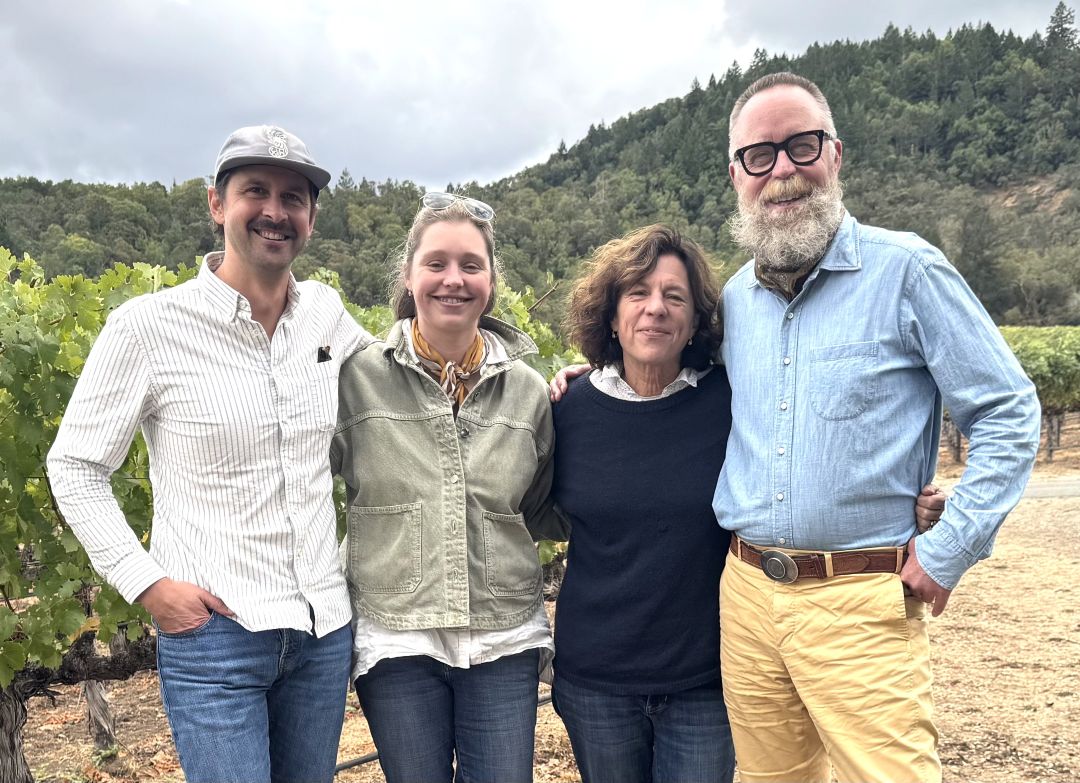
The team at Vine Hill Ranch. From left to right: Vineyard Manager Dominic Bianco, Winemakers Isabelle Straka and Françoise Peschon, and Proprietor Bruce Phillips. Their 2023 Cabernet Sauvignon is one of the wines of the vintage.
Final Thoughts
As I wrote in my recent article on the 2015s, I hope to see the day when St. Helena, Rutherford, Oakville and Napa Valley’s other top winegrowing regions are treated with the same reverence shown for Chambolle-Musigny, Vosne-Romanée and Gevrey-Chambertin; or Pauillac, Saint-Estèphe and Margaux; and other prestigious appellations around the world.
I tasted all the wines in this report in September and October 2025. The large number of quality wines in Napa Valley makes publishing all reviews in one timely report simply impossible. Readers can look forward to additional reviews soon.
© 2025, Vinous. No portion of this article may be copied, shared or redistributed without prior consent from Vinous. Doing so is not only a violation of our copyright but also threatens the survival of independent wine criticism.
You Might Also Enjoy
2015 Napa Valley Cabernet Sauvignon: In the Zone, Antonio Galloni, November 2025
Napa Valley’s 2022 & 2023 Cabernet Sauvignons, Antonio Galloni, December 2024
The 2021 Napa Valley Cabernets, Part One, Antonio Galloni, December 2023
Napa Valley: The Frantic 2020s & Stunning 2021s, Antonio Galloni, February 2023
The 2019 Napa Valley Cabernets: A Deep Dive, Antonio Galloni, January 2022
Napa Valley’s Thrilling 2018s & 2019s, Parts 1 & 2, Antonio Galloni, January 2021
Show all the wines (sorted by score)
- 001 Vintners
- Aberro
- Abreu
- Accendo Cellars
- Ad Vivum
- ALH
- Almacerro
- Alpha Omega
- Amici Cellars
- Ampleur
- Amuse Bouche Winery
- Annulus
- Antinori Napa Valley
- Arietta
- Arrow & Branch
- atLarge
- Aubert
- Au Sommet
- Baker Canyon
- Baker & Hamilton
- Behrens Family Winery
- Bella Oaks
- Bergman
- Bevan Cellars
- Blackbird
- Blankiet Estate
- BOND
- Brand
- Brion
- Bryant Family Vineyard
- Buoncristiani
- Burgess
- Cade
- Capiaux
- Cardinale
- Carte Blanche
- Carter
- Casa Piena
- Caterwaul
- Charles Krug
- Chimney Rock
- Cliff Lede Vineyards
- Clos du Val
- Colgin
- Colgin - Jubilation by Colgin
- Continuum
- Corison
- Cornell
- Coronet
- Correlation Wine Company
- Coup de Foudre
- Covalence
- Crosby Roamann
- Dakota Shy
- Dalla Valle
- Dana
- David Arthur Vineyards
- Davies Vineyards
- Details by Sinegal
- Detert Family Vineyards
- Diamond Creek
- Di Costanzo
- Di Costanzo - Di Co
- Dominus
- Dunn Vineyards
- Dyer
- Edge Wines
- Ellman
- El Molino
- Emerson Brown
- Etude
- Fe
- Fisher Vineyards
- Forman
- Frank Family
- Frog's Leap
- Futo
- Gallica
- Gamble Estates
- Gandona
- Grace Family Vineyards
- Groth
- Harlan Estate
- Haynes Vineyard
- Heimark Vineyard
- Heitz Cellar
- Hobel
- Hourglass
- Hudson
- Hudson - La Dominique
- Hyde de Villaine
- Impensata
- Inglenook
- Ink Grade
- JCB
- Jericho Canyon
- J.H. Wheeler
- Joseph Phelps Vineyards
- Kapcsándy Family Winery
- Keenan
- Keever
- Keplinger
- Kerr Cellars
- Kinsman Eades
- Kizor Family Cellars
- Knighton Family Vineyards
- Kohue
- Kongsgaard
- Lail Vineyards
- La Jota
- Laz
- Lindstrom
- Lokoya
- Louis M. Martini
- Mabon
- MacDonald
- Marineau Mills
- Mark Herold Wines
- Massican
- Matt Parish
- Mayacamas
- Melka
- Mending Wall
- Miner
- Mon Trajet
- Moone-Tsai
- Mythical
- Neotempo
- Nid Tissé
- Oakville Ranch
- Odette
- Opus One
- O'Shaughnessy Estate Winery
- Outpost
- Ovid
- Pahlmeyer
- Patel
- Patria
- Paul Hobbs
- Paul Hobbs - Crossbarn
- Perliss
- Peter Franus Wine Company
- PharaohMoans
- Philip Togni Vineyard
- PlumpJack
- Pott Wine
- Pride Mountain Vineyards
- Promontory
- Pulido-Walker
- Raymond
- Realm
- Retro Cellars
- Rewa
- Richard G. Peterson
- Rivers-Marie
- Robert Craig Winery
- Robert Mondavi Winery
- Rossi Wallace
- Rougiste
- Round Pond Estate
- Roy Estate
- S by Ray Signorello
- Scarecrow
- Screaming Eagle
- Seavey
- Selene
- Sentium
- Seven Apart
- Seven Stones
- Shafer Vineyards
- Signorello Estate
- Sinegal Estate
- Sloan Estate
- Snowden
- Spottswoode
- Staglin Family Vineyard
- Stag's Leap Wine Cellars
- St. Helena Winery
- Stony Hill
- St. Supéry
- Sylvan Lake Vineyards
- Taplin Cellars
- The Grade
- The Vineyardist
- Tobias Vineyards
- To Kalon Vineyard Company
- TOR
- Turley
- Turnbull Wine Cellars
- Ulysses
- Unity
- VHR, Vine Hill Ranch
- Vineyard 29
- Vineyard 7 & 8
- Westborn
- William & Mary
- Zakin Estate Wines
- Zeitgeist
